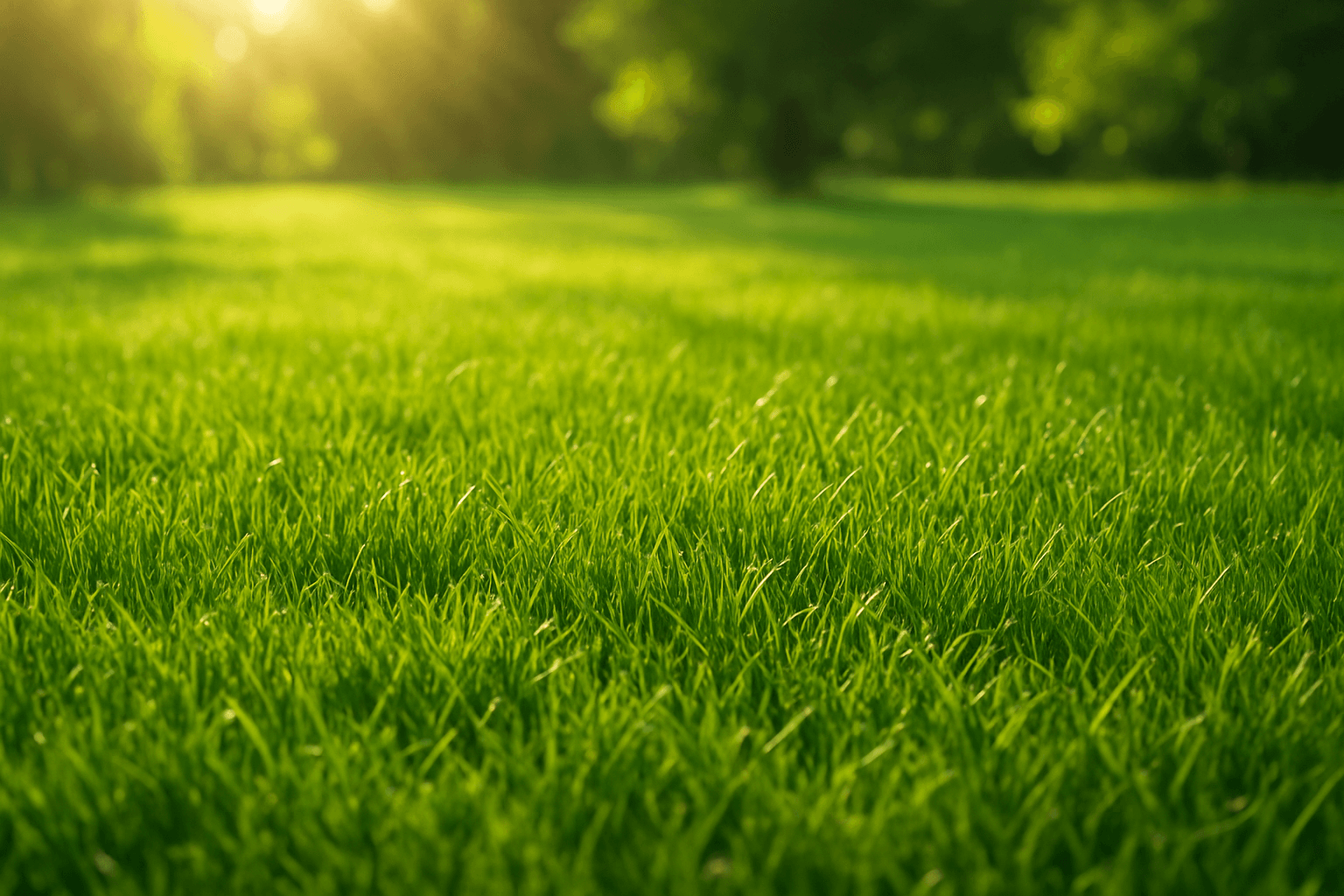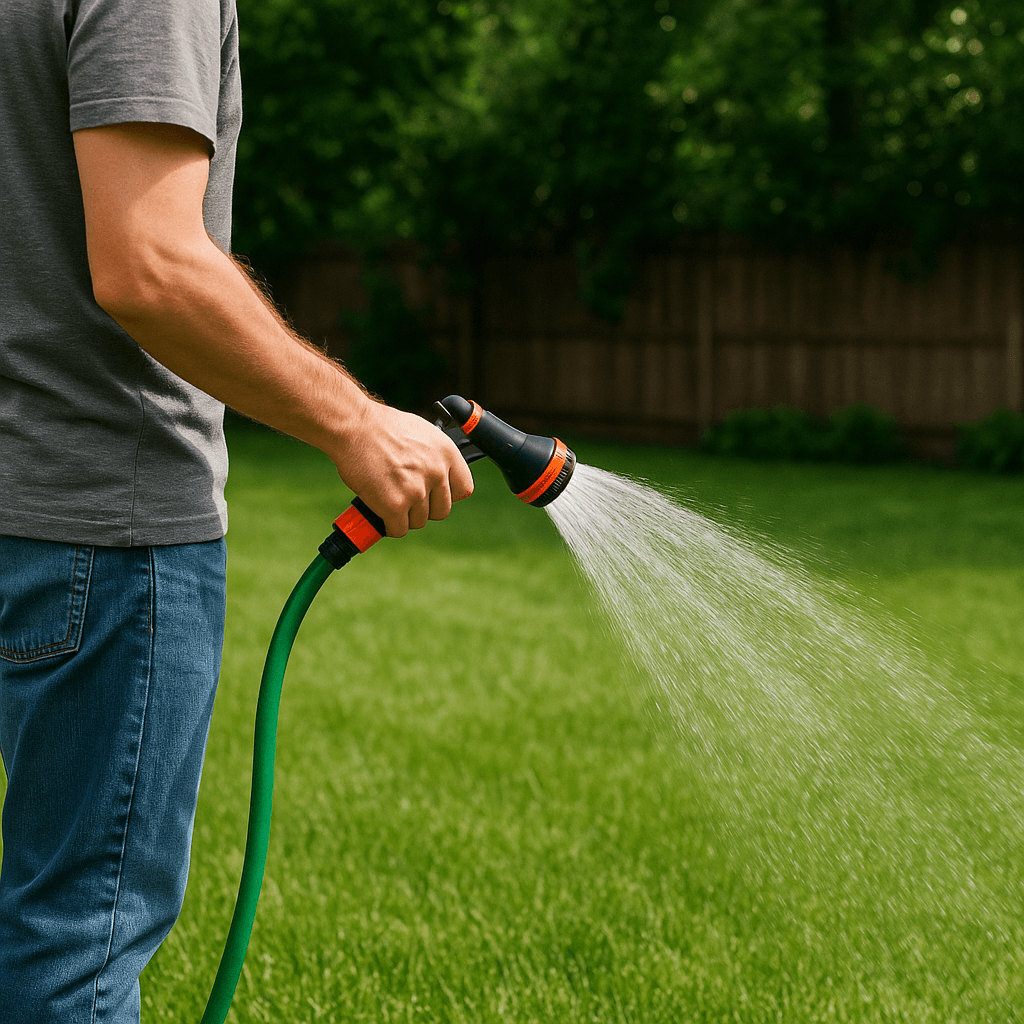Summer Lawn Care: Essential Tips for Healthy Grass
|
Kirk Brown |
|
Wednesday, June 25, 2025 |
|
|
Best Practices for Summer Grass Health
Before diving into specific practices, it's crucial to understand that summer lawn care involves a combination of proper watering, fertilization, and pest management. By focusing on these areas, you can ensure your lawn remains resilient against the summer heat. A well-maintained lawn not only enhances your home's aesthetic appeal but also provides a safe and comfortable space for outdoor activities, making your home a haven of relaxation and enjoyment.
Importance of Summer Lawn Care
During summer, lawns face stress due to higher temperatures, potential drought, and increased wear from outdoor activities. Proper summer lawn maintenance helps mitigate these stressors, ensuring your grass remains healthy and green. The key is to provide the right amount of nutrients and water while protecting against pests. Summer care is not just about survival; it's about maintaining vibrancy and growth. A proactive approach can prevent long-term damage and reduce the need for extensive repairs in the fall.
Watering Your Lawn in Summer
Watering is perhaps the most critical aspect of summer grass maintenance. Proper watering practices can make the difference between a brown, withered lawn and a lush, green one. Understanding the specific needs of your grass type and adjusting your watering schedule accordingly can significantly impact the health of your lawn. Consistency and precision in watering can also reduce water wastage, promoting environmental sustainability.
How to Water Your Lawn Effectively
- Water Early: The best time to water your lawn is early in the morning, between 6 am and 10 am. This allows the grass to absorb moisture before the sun is too intense, reducing evaporation. Morning watering helps prepare the lawn for the heat of the day, providing the necessary moisture for photosynthesis.
- Deep and Infrequent Watering: Instead of frequent shallow watering, water deeply but less often. Aim for about one inch of water per week, including rainfall. This encourages deep root growth, making your lawn more drought-resistant. Deep roots help grass access moisture from deeper soil layers, enhancing resilience against dry spells.
- Even Coverage: Ensure your sprinkler system covers the entire lawn evenly. Adjust sprinklers to avoid water waste and prevent dry spots. Uneven watering can lead to patchy growth and increased susceptibility to disease.
Lawn Watering Tips
- Check Soil Moisture: Use a screwdriver or soil probe to check moisture levels. The soil should be moist 6-8 inches below the surface. Regular checks can help fine-tune your watering schedule and prevent over or under-watering.
- Avoid Overwatering: Overwatering can lead to fungus and disease. If the soil feels soggy, reduce the frequency of watering. Monitoring weather conditions and adjusting your watering plan accordingly can save water and prevent disease outbreaks.
Fertilizing Your Lawn for Summer Health
Fertilization plays a vital role in maintaining a healthy lawn. However, it's essential to use the right type and amount of fertilizer. Fertilizers provide essential nutrients that grass needs to thrive, but improper use can lead to nutrient runoff and environmental harm.
Choosing the Right Fertilizer
- Summer Lawn Care Fertilizer: Use a slow-release fertilizer formulated for summer use. These fertilizers provide nutrients steadily, reducing the risk of burning your lawn. Slow-release formulas are particularly beneficial in hot weather, as they minimize nutrient leaching and promote steady growth.
- Nutrient Balance: Look for a balanced mix of nitrogen, phosphorus, and potassium. Nitrogen promotes green growth, phosphorus strengthens roots, and potassium enhances drought resistance. Understanding the specific nutrient needs of your grass type can help you select the most effective fertilizer.
Fertilization Tips
- Apply Sparingly: Over-fertilizing can damage your lawn. Follow the manufacturer's instructions for the right application rate. Excessive fertilizer can lead to rapid growth that stresses the grass and increases mowing requirements.
- Timing: Apply fertilizer early in the summer, before the peak heat sets in. Avoid fertilizing during drought conditions or extreme heat. Timing your fertilization to coincide with optimal growing conditions can maximize nutrient uptake and effectiveness.
Controlling Pests and Diseases
Pests and diseases can wreak havoc on your lawn during summer. Proactive pest control and monitoring are essential for a healthy lawn. Early detection and management can prevent minor issues from becoming major infestations that require extensive intervention.
Identifying Common Lawn Pests
- Grubs: These beetle larvae feed on grass roots, causing brown patches. Look for increased bird activity, as they feed on grubs. Regular inspections can help identify grub problems before they cause significant damage.
- Chinch Bugs: These tiny insects suck sap from grass blades, leading to yellowing and wilting. Monitoring for chinch bugs is crucial during dry spells when they are most active.
- Sod Webworms: These caterpillars feed on grass leaves at night, resulting in irregular brown patches. Spotting early signs of webworm activity can help target treatments effectively.
Pest Control Strategies
- Natural Predators: Encourage beneficial insects like ladybugs and birds that prey on lawn pests. Creating a habitat that attracts natural predators can reduce the need for chemical interventions.
- Organic Solutions: Use neem oil or insecticidal soap to target pests without harming beneficial organisms. Organic options are a safe and environmentally friendly choice for pest control.
- Chemical Treatments: If necessary, use chemical pesticides as a last resort, following all safety guidelines. Always prioritize integrated pest management (IPM) strategies to minimize chemical use.
Additional Summer Lawn Care Tips
Mowing Practices
- Mow High: Set your mower blades higher during summer, leaving grass taller. Taller grass shades the soil, reducing evaporation and promoting deeper roots. Maintaining an ideal mowing height can enhance drought tolerance and reduce weed invasion.
- Sharp Blades: Keep mower blades sharp to prevent tearing grass, which can lead to disease. Regular maintenance of your mowing equipment ensures clean cuts and healthier grass.
- Mow Regularly: Avoid cutting more than one-third of the grass height at a time to reduce stress. Consistent mowing practices encourage uniform growth and maintain the lawn's aesthetic appeal.
Aeration and Soil Health
- Aerate When Needed: Aeration relieves soil compaction, allowing roots to grow deeper. Aerate your lawn if it becomes compacted or waterlogged. Aeration also enhances the penetration of water and nutrients, improving overall lawn health.
- Improve Soil Quality: Top-dress with compost to improve soil structure and nutrient content. Enhancing soil quality supports robust grass growth and increases the lawn's resilience to environmental stressors.
Managing Weeds
- Hand Pulling: Remove weeds manually to prevent them from spreading. Regular hand-pulling is effective for small weed outbreaks and minimizes chemical use.
- Pre-Emergent Herbicides: Apply pre-emergent herbicides in early summer to prevent weed seeds from germinating. Timing is crucial for pre-emergent applications to ensure effectiveness without harming desired plants.
Conclusion
Taking care of your lawn in the summer requires attention to detail and a proactive approach. By following these summer lawn tips—focusing on proper watering, fertilization, pest control, and regular maintenance—you'll keep your grass healthy and vibrant throughout the season. Remember, a healthy lawn not only enhances your home's curb appeal but also provides a welcoming outdoor space for relaxation and enjoyment.
Implement these best practices for summer grass health, and your lawn will be the envy of the neighborhood. With the right care, your lawn can withstand the summer heat and remain lush and beautiful. These strategies not only benefit your lawn's appearance but also promote environmental sustainability and resource conservation, contributing to a healthier ecosystem in your community.
Últimos artículos
Compartir en




